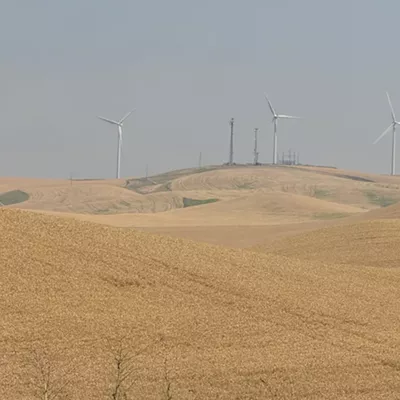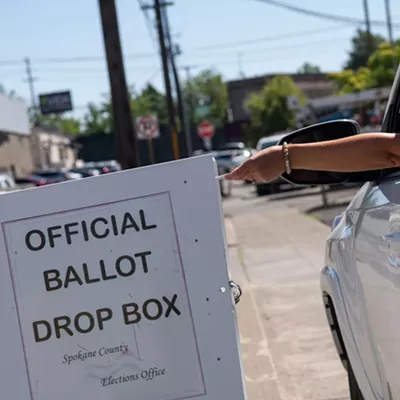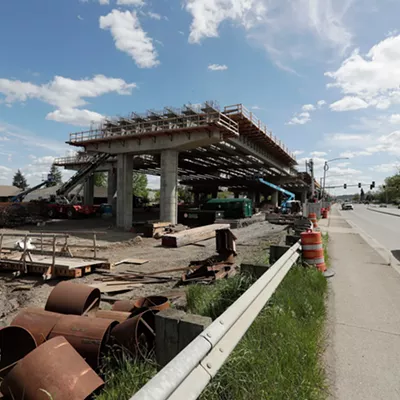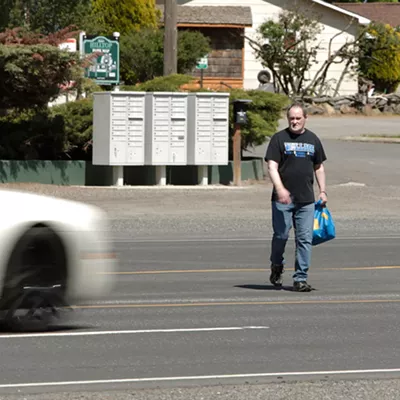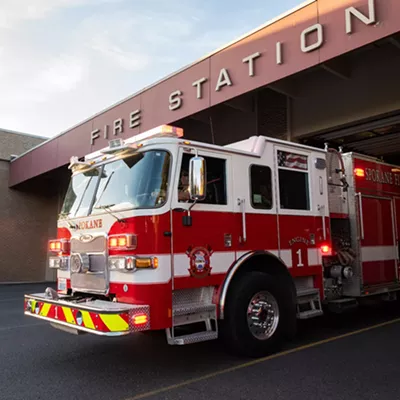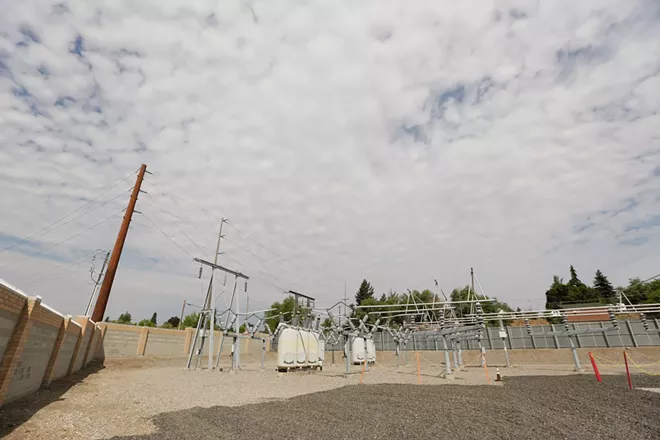
America's power stations had a rough year.
Across the country, those humming, fenced-in tangles of circuits and transformers faced bullets, fires, metal chains and a host of other destructive forces from people trying to disrupt the flow of electricity.
That type of vandalism happens every year, but in 2022, the number of attacks on power stations were higher than they've been in a decade. There were 108 attacks in the first eight months of the year — more than any year since 2011, which saw 123. Four of the incidents in 2022 are classified as a "cyber event," but the rest appear to be physical attacks.
And a dozen of those attacks were in Washington.
The Department of Energy data only goes through August, so it doesn't include recent incidents — like the Christmas Day attacks in Pierce County, which led to thousands of residents being plunged into darkness after two men attacked four substations in the early morning hours. Just a few weeks earlier, gunfire at two substations in North Carolina left 45,000 homes and businesses without power.
Even before the recent string of attacks, authorities were on the alert.
In January 2022, a Department of Homeland Security report warned that domestic terrorists had developed "credible, specific plans" to attack the nation's electricity infrastructure.
In early December, cable TV network NewsNation obtained a memo from federal officials that described six previously unreported attacks on power stations in Oregon and Washington in November, "possibly in response to an online call for attacks on critical infrastructure."
Two men were quickly arrested for the Christmas Day attacks in Pierce County, but according to court documents, they claimed they wanted to disrupt power in the area so they could commit a burglary. The men have been charged with "conspiracy to damage energy facilities," a federal crime punishable by up to 20 years in prison. But there's no mention of political ideology. And in North Carolina, authorities have yet to publicly identify any suspects or a motive.
While the reasons remain murky, the recent string of attacks has raised alarm and reignited concern about vulnerabilities in the nation's interconnected energy grid.
"We have seen attacks such as these increase in Western Washington and throughout the country and must treat each incident seriously," said Nicholas Brown, the U.S attorney for the Western District of Washington, in a statement earlier this month.
A review of Energy Department data didn't show any recent attacks in Spokane or adjacent counties, though in some cases, the data doesn't list the county where the attack occurred. And with hundreds of thousands of customers and a vast network of power infrastructure, energy providers in the Inland Northwest say they aren't letting their guard down.
"It's something that we certainly are aware of and watching," says Andy Barth, a spokesperson for Inland Power and Light, which serves 13 counties in Eastern Washington and North Idaho.
Avista Utilities, the largest energy provider in the area, declined to make anyone available for an interview, citing security concerns and the sensitive nature of the subject. In an emailed statement, a spokesperson said grid security is a top priority for Avista, and that the utility company follows industry-recognized best practices for physical and cyber security.
"We are aware of and following the regional and national events and working with our government partners at all levels to understand the threats and continue to align our security protections," the statement read.
DAYS OF DARKNESS
Substations are basically middlemen. They take high-voltage power from generators like dams and natural gas plants, and convert it into a lower voltage so it can be sent to homes and businesses. There are more than 55,000 substations across America. For security reasons, local utility providers declined to say how many substations they operate in the Inland Northwest.
The design varies quite a bit. While many substations have security cameras and chain link fences, they also tend to be unmanned and in remote locations.
"The big picture issue is that very large parts of the grid are out in the open and out in our forests," says Anjan Bose, a professor with Washington State University's School of Electrical Engineering and Computer Science. "There's no people around, and they can be easily attacked."
One manual, written and distributed by White supremacists in online chat rooms, described substations as "sitting ducks" and "worthy prey."
Domestic extremists have long been fascinated with America's power grid, says Devin Burghart, executive director of the Seattle-based Institute for Research and Education on Human Rights, which monitors far-right extremism.
Since at least the 1970s, neo-Nazi extremists have fantasized about widespread blackouts causing chaos and societal collapse — a breakdown of American society that ushers in a new era of White dominance, Burghart says.
In religious terms, it's comparable to a period of Great Tribulations or a second coming. It's a common trope not just limited to neo-Nazis, Burghart says. Far-right Boogaloo Boys, eco-terrorists and other militias have also fantasized about power grid failure. And adherents of the QAnon conspiracy will frequently reference "the Storm" — a prophesied "10 days of darkness" set off by nationwide blackouts that culminates in arrests, military tribunals and the possible execution of various liberal politicians and media figures.
Extremists will also talk about taking out the food supply, banking system or water facilities in an effort to ignite societal collapse, Burghart says. But those are difficult targets. Power stations, however, are isolated and lightly guarded. Anyone with a shotgun can cause chaos.
"It's the maximum bang for the lowest amount of risk," Burghart says.
In August 2021, four men connected to the neo-Nazi "Atomwaffen Division" were charged with conspiracy for planning to attack an unspecified power station. In February 2022, three men pleaded guilty to conspiring to provide material support to terrorists as part of a plot to attack American power grids. According to the U.S. Department of Justice, the men had conversations about how a long-term power outage could cause war, a race war and even the next Great Depression.
Much of the discussion about power grid attacks takes place in private chat rooms on the Telegram messaging app, Burghart says, adding that the volume of chatter about the subject seems to have risen over the past year.
"We certainly are at a much higher level than I remember seeing in a long time," Burghart says.
Not every power station attack is motivated by ideology. In many cases, the vandalism appears to be simply the result of a bored person in the forest doing target practice with a gun.
"A lot of these attacks tend to be done by vandals," says Daniel Kirschen, a professor in the University of Washington's Department of Electrical and Computer Engineering. "But if you start having attacks that are more coordinated with people who want to do terrorism, that could really be a major, major issue."
It's happened before. Most notably in 2013, when a team of multiple gunmen opened fire on a substation in Metcalf, California, severely damaging 17 transformers and causing more than $15 million in damage. The attack, which remains unsolved, was unusually sophisticated. The former chairman of the Federal Energy Regulatory Commission described it as the "most significant incident of domestic terrorism involving the grid that has ever occurred."
"That was really a wake-up call," Kirschen says.
SAFEGUARDS
The idea of extremists destroying America's electric infrastructure is scary for obvious reasons, but it's important to note that power stations get damaged all the time. The culprit is rarely a neo-Nazi trying to ignite a race war — it's often the weather, a mechanical issue or a squirrel on an ill-fated adventure.
When a substation goes down, Inland Power's Barth says his company is generally able to avoid lengthy blackouts by diverting power from a separate substation while engineers work to repair the damage or replace equipment.
"That substation has to work a little bit harder for a very brief time while that affected substation is repaired," Barth says. "We have safeguards like that in place."
The recent attacks have been annoying and expensive, WSU's Bose says. But the attackers don't seem very sophisticated. He notes that the power outages caused by hurricanes far outweigh what a vandal could hope to cause by shooting up a substation.
After the string of attacks this year, regulators with FERC ordered a review of power station security standards. There's always room for improvement, Bose says, but enhancements like concrete walls and additional backup equipment cost money. It's a question of willingness, not feasibility.
Cybersecurity is also a growing area of concern and investment for power companies, but Bose notes that most hacks involve office computers or customer data — not the computers that control the grid itself.
While it's not foolproof, Bose believes America's system of reliability standards and power grid safeguards is generally pretty robust.
But it's not invincible.
"If another country attacks, that's a different ballgame," Bose says.
For months, Russian forces have waged a relentless assault on Ukraine's energy grid — firing missiles at dams, substations and power plants. In November, Ukraine President Volodymyr Zelensky said Russian attacks had "seriously damaged" about 40 percent of the country's electric infrastructure. It's led to widespread rolling blackouts and millions of citizens without power. The U.S. has pledged $53 million to help Ukraine replace its damaged electric equipment.
An assault like the one in Ukraine could hypothetically cause prolonged blackouts across America, Bose says. But he notes that Russians have technical knowledge, missiles, planes and heavy duty bombs.
Thankfully, White supremacists don't. ♦




